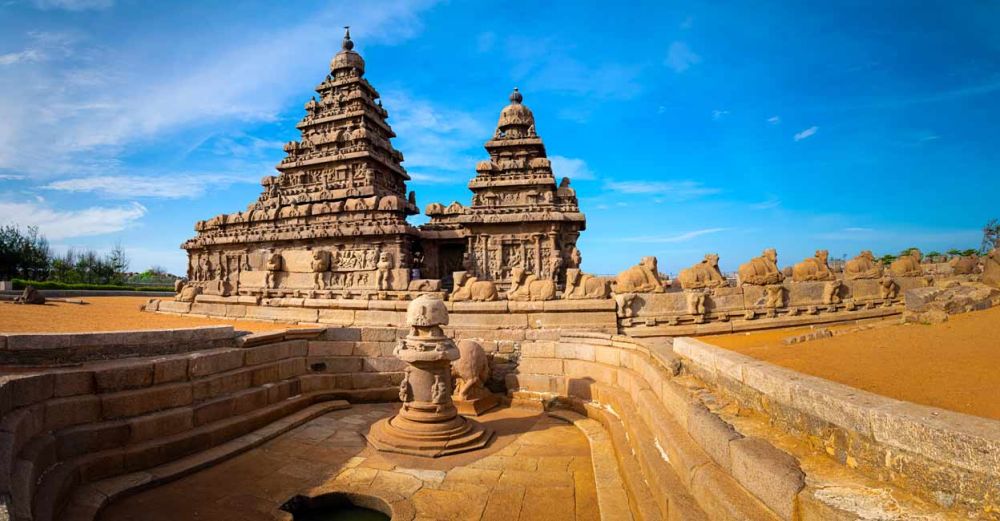

Mahabalipuram, also known as Mamallapuram, is a historic city and UNESCO World Heritage site situated on the Bay of Bengal, in the state of Tamil Nadu, India. This coastal city is renowned for its rich architectural and cultural heritage that dates back to the 7th century. It was once a bustling seaport during the reign of the Pallava dynasty, which ruled from approximately 275 CE to 897 CE, and was the second capital of the Pallavas who ruled Kanchipuram.
The inception of Mahabalipuram as a significant center for art and architecture can be traced back to the rule of King Narasimhavarman I, also known as Mamalla, after whom the town is named. The heritage site is famous for its group of sanctuaries carved out of rock in the form of chariots, cave sanctuaries, monolithic Rathas (temples in the form of chariots), mandapas (cave sanctuaries), giant open-air rock reliefs, and the Shore Temple, all dating from the 7th and 8th centuries.
Though Mahabalipuram was an important port city in ancient times, its historical structures were rediscovered by European explorers during the colonial period. The site gained widespread international attention in the 18th century, when British explorer D. R. Fyson described the monuments in detail. This renewed interest led to the preservation and archaeological study of Mahabalipuram's significant cultural heritage.
In later years, the Tamil Nadu state government and the Archaeological Survey of India (ASI) have played a pivotal role in promoting Mahabalipuram as a prime tourist destination. The monuments that tell tales of a rich bygone era, coupled with the picturesque beaches, have made it a popular draw for both domestic and international tourists.
In recent years, there has been a push towards sustainable and responsible tourism that respects the natural and historical heritage of the area. Tourists are encouraged to engage with local culture and traditions while ensuring that their footprint on the environment is minimal. Moreover, the annual Mahabalipuram Dance Festival, which showcases classical dances from across India, has become a significant tourist attraction.
Today, Mahabalipuram continues to fascinate visitors with its ancient monuments including Five Rathas, Shore Temple, and the Arjuna's Penance bas-relief, an incredibly intricate rock carving. The combination of the town’s rich history and the local government’s efforts in tourism development have made Mahabalipuram a model for heritage site management and preservation.
In conclusion, the history of tourism in Mahabalipuram is as enduring as its monuments. From being a crucial port city to a symbol of India's historical significance, Mahabalipuram's journey as a beacon of cultural tourism continues to evolve, attracting visitors from across the globe to experience its timeless beauty and historical allure.